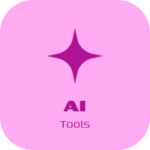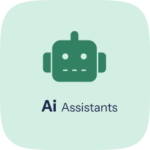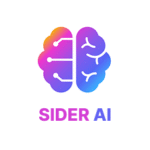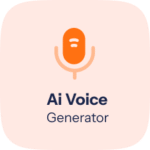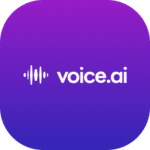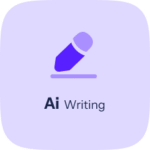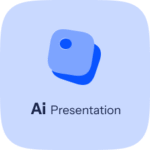How to Detect AI-Generated Text (and Why It Matters)
Introduction: Can You Spot AI-Written Content in Today’s Digital Landscape?
In a world increasingly shaped by the rapid evolution of artificial intelligence, AI-generated text is becoming nearly indistinguishable from human-written content. Whether you’re reading blogs, academic papers, or online reviews, chances are that at least some of it has been generated by tools like ChatGPT. As these technologies gain sophistication, the ability to detect AI-generated content is no longer just a technical curiosity—it’s a critical necessity across education, publishing, marketing, and online platforms. From maintaining originality to preserving public trust and navigating SEO best practices, identifying machine-written text helps ensure digital integrity. In this article, we’ll break down how to detect AI-generated text organically and why this matters for businesses, educators, and individuals alike. Discover practical techniques, cutting-edge tools, and expert tips to navigate an AI-infused internet with confidence.
Why Is Identifying AI-Generated Text So Important?
How Does AI Content Affect Ethical Standards?
The rise of AI-generated content introduces ethical challenges across multiple sectors. In education, it jeopardizes fairness and learning outcomes. In media, it risks spreading misinformation. Marketing teams may struggle to maintain authenticity, while publishers face issues around copyright and transparency. If left unchecked, machine-generated content can dilute trust, skew public opinion, and compromise brand credibility.
Note: Being able to recognize AI-written material helps ensure adherence to policies like Google’s AI content guidelines and promotes ethical communication practices.
What’s the Real-World Impact on Industries?
Many industries are navigating the consequences of undetected AI content. In classrooms, students may submit AI-written assignments. In newsrooms, automated reporting can blur accountability lines. Businesses risk SEO penalties if generic AI text substitutes original content. As platforms like OpenAI accelerate breakthroughs, the ability to differentiate between human and AI writing is essential for recruiters, educators, and content creators.
Key Insights to Consider
- Detecting AI-created content safeguards your online credibility.
- Educators can leverage detection tools to uphold academic rigor.
- Journalists use them to validate the authenticity of sources.
What Are the Best Ways to Detect AI-Generated Text?
1. Is the Writing Style Too Perfect or Repetitive?
AI-generated articles often follow rigid structural patterns with a mechanical tone. Look for robotic consistency—sentences beginning similarly, flawless grammar without variation, or emotionless transitions. These are common markers of machine-crafted content. Unlike humans, AI typically lacks subtle tonal variations and storytelling flair, making it harder for machines to mimic personality and spontaneity.
2. Are Keywords and Buzzwords Overused?
Semantic repetition—reiterating the same idea with different phrasing—is a common giveaway. If you notice overuse of phrases like “how to detect AI-generated text” or inflated terms like “leveraging innovative strategies,” it may indicate keyword stuffing rather than authentic narrative flow. AI writing often prioritizes optimal keyword density over readability.
3. Are the Facts Verifiable?
AI sometimes creates false facts or cites non-existent sources—known as “hallucinations.” To ensure credibility, cross-check unusual statistics or claims using platforms like Google Scholar or Snopes. If references can’t be verified, there’s a high chance the content was generated by a language model.
Key Detection Pointers
- AI struggles with emotional nuance and idiomatic language.
- Repetitive sentence structures may reveal artificial origin.
- Always double-check data points and citations.
Which AI Detection Tools Work Best (and What Do They Offer)?
| Tool | Key Features | Price | Strengths |
|---|---|---|---|
| GPTZero | Highlights likely AI-written content, basic plagiarism checks | Free & Premium plans available | Excellent for detecting ChatGPT-style writing |
| Originality.ai | AI detection paired with plagiarism scanning | $0.01 per 100 words | Ideal for SEO audits and professional writers |
| Writer.com AI Detector | Fast, browser-based analysis | Free | User-friendly for non-technical audiences |
Pro Tip:
Even if you purchase ChatGPT services via crypto, always review and verify AI outputs using trusted detection tools to maintain content integrity.
Mini Case Study: AI Use in University Assignments
At a top-tier university, a professor noticed an unusually polished paper. Running it through GPTZero revealed that 85% of the essay matched AI-writing patterns. Upon inquiry, the student admitted to using ChatGPT. As a result, routine checks were implemented, decreasing AI misuse by 60% in one semester. The outcome: improved learning quality, higher content integrity, and new AI-use policies campus-wide.
Debunking Myths About AI-Generated Text
| Common Misconception | What’s Actually True |
|---|---|
| AI-generated content can’t be identified. | Detection tools are highly effective when used properly. |
| All AI content is harmful. | AI can be helpful if disclosed and ethically applied. |
| Machine text is always error-free. | AI can still produce awkward grammar and flow issues. |
| Free tools aren’t accurate. | Some no-cost platforms provide surprisingly reliable results. |
Data Snapshot: How People Feel About AI Content
- A survey by Pew Research found that 58% of Americans worry about AI misinformation.
- According to Nature, 32% of academics accidentally cited AI-created data.
What Mistakes Should You Avoid When Spotting AI Text?
- Don’t rely solely on tools—manual review adds depth and accuracy.
- Always verify any facts, stats, or links included in content.
- Context matters—structured writing in formal settings doesn’t always mean it’s AI-generated.
- Modern AIs can mimic slang or common expressions—don’t assume informality equals human authorship.
Future Trends: Where AI Writing (and Its Detection) Is Headed
AI-generated writing is becoming increasingly sophisticated. Next-gen systems will incorporate humor, emotion, and interactive content more fluidly. Detection methods are responding with innovations like watermarking at the token level and browser-based scanning plugins. Regulatory frameworks may soon mandate disclosures for AI-written material, especially in journalism and advertising. Digital literacy programs are evolving accordingly, equipping people to engage critically with AI-produced content.
Expert Tips to Enhance Manual Detection
- Watch for robotic or jarring transitions between topics.
- Compare the suspected text with the author’s past writing for tone mismatches.
- Use multiple detection tools for triangulated verification.
- Establish internal guidelines for content review and publication protocols.
Quick Checklist: Ready to Identify AI Text?
- Understand patterns like repetitive phrasing or unnatural transitions.
- Test content with platforms like GPTZero or Originality.ai.
- Fact-check all claims and references from credible sources.
- Compare new pieces with known human-generated content.
- Educate your team about responsible AI usage and digital ethics.
Real Success Stories
Marketing Agency: “After adding AI checks, bounce rates dropped by 18% and our transparency increased SEO rankings.”
University Student: “I nearly failed due to ChatGPT misuse. Now, I pre-screen assignments and help classmates understand AI detection.”
Editorial Team: “Catch rates improved significantly—7 AI-generated submissions flagged in one week alone. Our review credibility has soared.”
Useful Resources to Explore Further
- Writing with AI Newsletter: Practical guidance on ethical AI use.
- Originality.ai: Trusted detection tool for digital professionals.
- Springer’s Academic Guide: Standards and best practices for scholarly AI use.
- Ploonad: Access smart and reliable AI products and services.
Frequently Asked Questions
1. What does AI-generated text mean?
It’s text written by algorithms trained on massive amounts of human language, producing content that mimics real writers.
2. Why do we need to spot AI-written content?
To ensure content originality, maintain integrity, and prevent confusion or deception in communication.
3. Can I always rely on AI detection tools?
No—while helpful, they should support rather than replace human judgment and manual review.
4. Are these tools free?
Some offer limited free features, while others provide full access through paid subscriptions.
5. How well does GPTZero perform?
It’s fairly accurate for identifying ChatGPT-style writing traits, but not foolproof.
6. Will Google penalize AI-made content?
Google targets low-quality, unhelpful content—regardless of whether it’s human or machine-made.
7. What industries should watch out for AI content?
Education, journalism, SEO, publishing, and customer service are most impacted by AI-created text.
8. How do I verify if AI wrote an email?
Evaluate the tone, structure, and flow—lack of personal touch or repetitive writing can be red flags. Then use a detection tool.
9. What is semantic looping?
When the AI repeats the same idea multiple ways throughout an article, often unnecessarily.
10. Can AI replicate human writing mistakes?
Yes, but inconsistencies can still feel unnatural and lack contextual appropriateness.
11. Is AI-written content legal?
Legal, yes—but misleading use, such as in academic dishonesty, can violate institutional policies.
12. Can AI content still help with SEO?
It can, if it adds value and follows Google’s quality content guidelines.
13. How is watermarking improving?
Researchers are embedding hidden signals at the token level to help identify AI-created text more reliably.
14. Can AI hide plagiarized content?
AI can attempt to paraphrase, but top tools can still catch subtle similarities if misused.
15. Can reviewers reject AI-generated work?
Yes—especially when terms of service or institutional guidelines require human authorship.
16. What are “hallucinations” in AI text?
Fabricated or incorrect facts and references produced predictively rather than from real data.
17. Can AI tools also detect AI content?
Yes—many detection apps use algorithms trained on large AI-generated datasets for pattern matching.
18. Is image detection as reliable as text?
No. Text AI detection has more mature research backing compared to visual artifacts.
19. Can AI detection work in other languages?
Yes, but performance may diminish in lesser-served or low-resource language models.
20. Will future AI be undetectable?
It may become harder, but advances in transparency standards and watermarking will help balance the scales.
Conclusion: Stay Informed, Stay Authentic
The ability to detect AI-generated content empowers you to safeguard accuracy, trust, and transparency in the digital ecosystem. As AI tools reshape how we produce and consume text, your awareness becomes a critical asset. Leverage detection tools, educate your peers, and make informed choices when it comes to content creation and evaluation. For expert tools, ethical AI use guides, and customizable content solutions, explore Ploonad.com today and take the next step toward content clarity and compliance.


